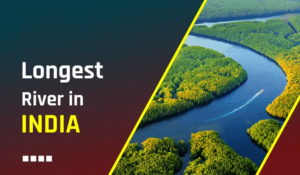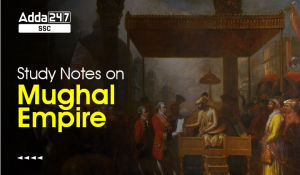Top 10 Facts About : Evolution of Indian Railway Stations From Steam to Electrification
Dear Candidates we are back with another interesting topic related to Indian Railways – “Top 10 Facts About : Evolution of Indian Railway Stations From Steam to Electrification”. From the basic beginnings in the steam period to the widespread electrification seen today, the growth of Indian railway stations demonstrates the extraordinary journey of modernization and advancement in the nation’s rail transit system. The Indian Railways, one of the world’s major railway networks, has gone through substantial changes throughout the years, shifting from steam locomotives to electrification technology. This revolutionary move has not only improved efficiency, speed, and connection, but it has also contributed to environmentally friendly and sustainable transportation. Interested candidates keep reading as in this article we look into the interesting history, significant milestones, and revolutionary influence of the journey from steam to electricity in Indian railway stations, revealing the country’s rail legacy’s seamless combination of tradition and modernity.
- Beginnings of the Steam Era: The Indian railway system, founded on April 16, 1853, began with steam-powered locomotives. The first passenger train operated for 34 kilometers from Mumbai (formerly Bombay) to Thane.
- Early Electrification: In the 1920s, pioneering electrification of Indian railway stations began. The first electric train operated between Bombay VT (Victoria Terminus) and Kurla Harbour Line in 1925.
- Victoria Terminus (Now Chhatrapati Shivaji Maharaj Terminus): In 1929, Mumbai’s renowned railway station, Victoria Terminus (now Chhatrapati Shivaji Maharaj Terminus), accepted electricity, making it one of India’s first electrified stations.
- The first major electrification project was completed in 1958, when the Howrah-Burdwan segment in West Bengal was electrified across a distance of around 109 kilometers.
- Electrification of the Delhi-Kolkata route: In the 1960s, the famed Delhi-Kolkata line was electrified, considerably improving connection and speed. The electrification process took several years, and the entire line was electrified in 1967.
- Electrification of the Mumbai-Pune segment: The electrification of the Mumbai-Pune stretch was completed in 1967, significantly modernizing train transportation between these two major cities.
- Major Electrification program: In the early 1990s, Indian Railways initiated a thorough electrification program to greatly extend the length of electrified routes. Approximately 3,000 kilometers of rail were electrified between 1990 and 1995.
- Several portions of the Golden Quadrilateral Project, a significant project to link four metropolitan areas with high-speed electric lines, were electrified in the late 1990s and early 2000s.
- South Eastern Railway Electrification: The South Eastern Railway, one of India’s major railway zones, achieved 100% electrification in 2002, becoming the country’s first fully electrified zone.
- Current Electrification Status: In 2023, more than 65% of the complete Indian Railways network, spanning roughly 29,000 kilometers, would have been electrified. The railway officials are working hard to complete electrification in the near future.
The electrification of Indian railway stations has not only resulted in speedier and more efficient transit, but it has also aided environmental sustainability by lowering carbon emissions and reliance on fossil fuels. The transition from steam to electricity has been a revolutionary experience, with Indian Railways now having one of the world’s largest electrified train networks.



 Top 10 Longest Rivers in India, Largest ...
Top 10 Longest Rivers in India, Largest ...
 Mughal Empire Notes For RRB NTPC Exam 20...
Mughal Empire Notes For RRB NTPC Exam 20...
 Longitude and Latitude of India - Defini...
Longitude and Latitude of India - Defini...


